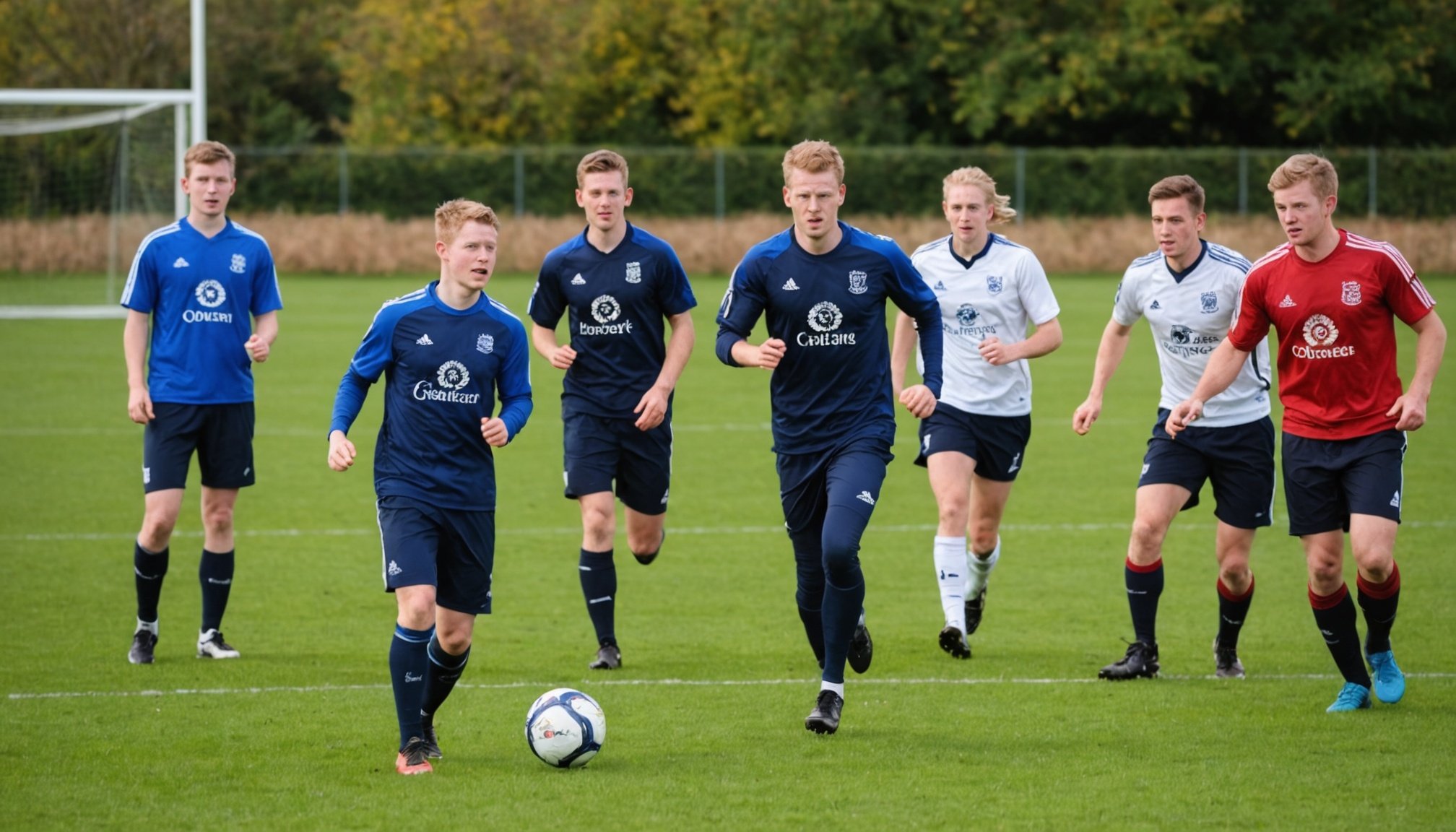Understanding Community Engagement in UK Sports Clubs
Community engagement in UK sports clubs is crucial for boosting participation and ensuring the clubs thrive. Engaging with local communities can lead to increased membership and improve the club’s image and influence. However, sports clubs often face challenges in attracting and retaining members, such as lack of awareness and competition from other activities.
To address these challenges, UK sports clubs can adopt various participation strategies. Forging strong connections with the local community enhances visibility and draws in potential members. Clubs can create sport-specific programs tailored to community interests and utilize marketing techniques to capture attention.
Increased local participation in sports clubs benefits both the club and the community it serves. Enhanced community engagement in sports fosters better health outcomes and fortifies social cohesion. Moreover, being active in sports contributes to individual well-being and helps prevent health-related issues.
Engaging with the broader community also symbolizes a commitment to nurturing relationships and addresses societal challenges like sedentary lifestyles. The alignment of club activities with local needs encourages continuous involvement, empowering both individuals and groups within the community.
Also read : Empowering inclusion: innovative approaches for uk sports clubs to champion athletes with disabilities
In conclusion, cultivating community engagement in sports clubs is a multi-faceted endeavour. It requires dedication, creativity, and a strategic approach to foster an environment of collaboration and participation.
Innovative Outreach Strategies
Sports clubs in the UK can benefit greatly from implementing innovative outreach strategies that enhance community engagement. By adopting modern techniques, clubs can connect with potential members more effectively and build robust relationships with their local communities.
Utilizing Social Media for Outreach
Sports clubs can leverage social media platforms to reach broader audiences and engage community members actively. Engaging content such as live-event updates, behind-the-scenes glimpses, and interactive polls can resonate well with followers. An example of success can be seen in clubs that used Instagram stories to share player interviews, sparking increased local participation and interest. Platforms like Facebook and Twitter provide opportunities to share events and initiatives, fostering a sense of community belonging and keeping members informed and involved.
Partnering with Local Organizations
Collaborations with local schools, businesses, and charities can be mutually beneficial. Clubs may set up cross-promotional activities, creating programs that increase visibility and participation. For instance, partnering with schools for after-school programs can introduce sports to younger demographics, fostering early interest in club activities. Successful partnerships have led to increased community ties and a shared commitment to health and wellness goals.
Hosting Community Events
Organizing inclusive community events can effectively boost interest and participation in sports clubs. These events should cater to a range of demographics, such as children, families, and seniors. Local sports festivals, open days, and free workshops are excellent ways to encourage community involvement. Effective promotion strategies, such as personalized invitations and community flyers, can maximize attendance.
Fostering Local Connections
Building local connections is essential for the growth and success of sports clubs. A robust network within the community supports clubs in attracting new members and fostering a sense of communal belonging. To establish and nurture these connections, engaging with community leaders and influencers is vital. They can act as advocates, promoting club activities and strengthening relationships with potential members.
Effective relationship management starts with identifying key community figures and creating communication channels that allow for open dialogue. Clubs can organize regular meetings with these influencers to discuss community needs and club offerings, ensuring alignment and mutual benefit.
To draw in non-members, sports clubs can host targeted outreach activities. For example, inviting local residents to special open days or informational sessions can pique interest and demonstrate the club’s commitment to the community. Additionally, personalized invitations and follow-ups after events can enhance engagement and encourage ongoing participation.
Fostering connections also means understanding and addressing the unique needs of different demographics. Tailoring outreach efforts and programs to specific groups, like youth or retirees, can yield significant engagement results. By consistently nurturing these relationships, sports clubs can create a welcoming environment that resonates with the entire community.
Measuring the Impact of Outreach Initiatives
Measuring the impact of community outreach initiatives is central to understanding how effectively sports clubs engage with their communities. Establishing Key Performance Indicators (KPIs) provides a framework for assessing success. Clubs should identify relevant KPIs, such as membership growth and event participation rates, which reflect the effectiveness of their strategies. Collecting data systematically is crucial. Surveys, attendance records, and digital metrics can offer insights into participation trends.
By fostering feedback loops, clubs ensure ongoing improvement in their community engagement efforts. Regular feedback from members and participants can highlight areas needing attention, helping refine engagement strategies.
Analyzing case studies of clubs that have successfully tracked their engagement metrics offers valuable lessons. These examples show the importance of adapting outreach based on performance data. Strategies such as altering event formats or enhancing communication channels can improve overall participation.
Engaging community members in the data-gathering process enhances the quality of insights. Surveys and feedback sessions, whether online or in-person, provide a deeper understanding of community needs. Offering incentives for participation in these efforts can increase response rates, allowing clubs to refine their outreach strategies effectively. Ultimately, using these insights aids in tailoring programs to better serve community interests.
Long-term Strategies for Sustained Engagement
Establishing a vision for long-term engagement is fundamental for sports clubs aiming to maintain vibrant community connections. Developing strategies that enhance community longevity not only sustains participation but also deepens the club’s impact within the community.
Creating programs that foster continuous participation is vital. Sports clubs should focus on designing inclusive activities that promote community bonding and loyalty. Continuous engagement can be achieved through regular workshops, annual memberships with special perks, or season-based leagues catering to diverse skill levels. Ensuring these programs resonate with community interests enhances their effectiveness.
Adaptability is key in maintaining long-term engagement. As community needs and trends evolve, clubs must be agile in their approach. Regularly updating offerings to incorporate new sport types, progress tracking, or tech-driven initiatives can keep the offerings fresh and exciting. For example, introducing virtual training sessions could attract tech-savvy youths, ensuring participation across demographics.
Furthermore, instilling a sense of ownership among members can drive loyalty. Encouraging members to take active roles in club administration or event planning can reinforce their commitment. By emphasizing their contributions to club success, members remain invested in its future. Ultimately, a flexible and inclusive approach ensures sustained engagement and community longevity.
Conclusion: The Future of Community Sports Clubs
The future of sports clubs lies heavily in how they adapt to evolving community dynamics and utilise emerging trends in engagement. Clubs must harness the potential of technology to stay relevant and appealing. Incorporating digital tools for community sports development can significantly enhance participation and streamline communication with members. Online platforms can facilitate virtual training sessions or interactive forums, bridging geographical gaps and making clubs accessible to a broader audience.
Local engagement trends are shifting, necessitating innovative approaches to outreach. Clubs can explore incorporating gamification in activities to engage younger audiences and promote long-term participation. Adopting augmented reality (AR) technologies in events can also offer immersive experiences, attracting tech-savvy community members. Additionally, eco-friendly initiatives are gaining momentum, with sports clubs implementing sustainable practices to align with community priorities.
Clubs should also focus on fostering inclusivity. Ensuring that programs cater to diverse groups, including those with disabilities or from various cultural backgrounds, enhances community engagement and club growth. Cultivating partnerships with tech companies, environmental groups, and cultural organizations can support these efforts.
Overall, the future success of community sports clubs hinges on their willingness to embrace change and prioritize innovative, inclusive outreach strategies.











